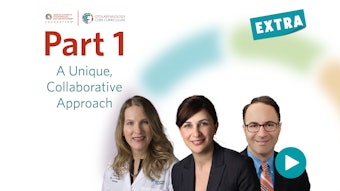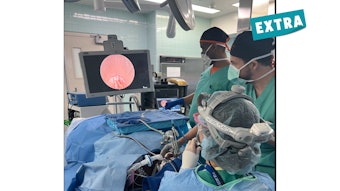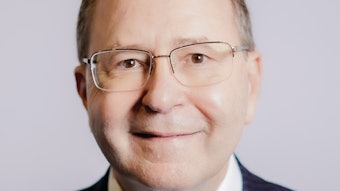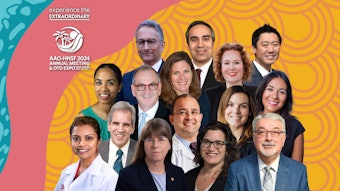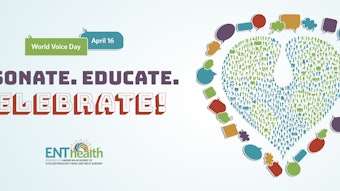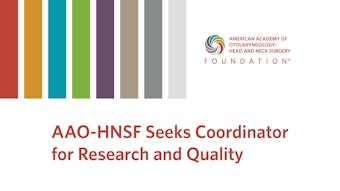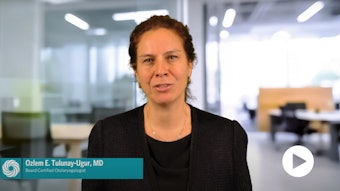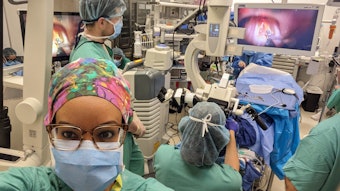Minding the Gaps: Married to Medicine
What does it take to make a marriage work when one or both partners are physicians?
The ever-present strain on clinicians’ emotional wellbeing continues to intensify—in part because of the increasing demand to be constantly accessible. This emotional toll often manifests as a struggle to maintain a harmonious family life. But there is hope!
The AAO-HNS Women in Otolaryngology (WIO) Section sponsored a live webinar, “Married to Medicine” on February 13 to find out exactly what it takes to make a medical marriage thrive. This webinar was made possible through a WIO Endowment Grant and is the first in the Minding the Gaps webinar series.
 Minka L. Schofield, MD, moderator, Immediate Past Chair of WIO, and current Chair of the AAO-HNS Diversity and Inclusion Committee.
Minka L. Schofield, MD, moderator, Immediate Past Chair of WIO, and current Chair of the AAO-HNS Diversity and Inclusion Committee.
Before starting the discussion, Dr. Schofield introduced The Medical Marriage, an enduring primer to helping medical families deal proactively with their struggles. The book’s authors, Wayne Sotile, PhD, and Mary Sotile founded the Sotile Center for Resilience for which their daughter, Ms. Fallon, now leads wellness programs.
The Changing Dynamics of Medical Families
 Rebecca Fallon, guest speaker and Director of Wellness for the Sotile Center for Resilience.
Rebecca Fallon, guest speaker and Director of Wellness for the Sotile Center for Resilience.
Ms. Fallon explained that two major changes have drastically altered the dynamics of medical families over the last couple of decades. “Women have entered medicine in droves,” she shared. “Almost half of medical residents today are women, and almost half of surgeons are women. Today’s male physician is also much more focused on family and household and more involved than the generations of men before him were.” These social shifts have meant that family responsibilities are not as clear-cut along gender lines as they were in the past.
Ms. Fallon also cited increasing demands on clinicians to constantly attend to their electronic medical record (EMR) and be accessible to patients at all hours via text as newer sources of stress. These factors are likely related to most physicians, as almost 80% of those surveyed said that work-family stress is a primary stress in their lives.
Are Surgeons Special (When It Comes to Dealing With Family Stress)?
Dr. Schofield brought the discussion even closer to home, asking Ms. Fallon whether surgeons tend to follow the same patterns as other physicians in dealing with work-family stress. Ms. Fallon noted that the skill of surgeons in “turning off” their emotions that can be essential in the OR is often less helpful when it comes to relationships. “The more brutal your training is, the more you adopt this ‘go numb and keep going mentality.’ And, of course, we know surgical training is the most brutal.” It can be extremely difficult then, to switch mentalities from the sometimes-traumatic events of the day to being emotionally engaged with loved ones.
 Carol R. Bradford, MD, MS, (right) with her husband Dave Bradford.
Carol R. Bradford, MD, MS, (right) with her husband Dave Bradford.
Ms. Fallon explained that one of the biggest predictors of a physician’s resilience is having a family that supports or, better yet, applauds and values their work. The biggest predictor of how your family will feel about your work is not the hours you put in or the money you make, she shared, but your mood when you walk in the door. Both partners working to shape the family’s dialogue about the work is also important. “One of the hardest things that a lot of physicians deal with is work shaming.”
Is Your Life More Toxic or Nurturing?
Following along these lines, Dr. Schofield invited participants to carry out an exercise recommended in The Medical Marriage by assessing whether their partner’s current situation could be considered more “nurturing” or “toxic.”
 Angela M. Powell, MD, (right) with her husband Gregory Saufley.
Angela M. Powell, MD, (right) with her husband Gregory Saufley.
Despite the obstacles to creating a happy home life, all four panelist couples identified ways that they had been able to either provide a nurturing environment to their partner or family or to mitigate toxic situations related to work stress.
 Yolanda L. Troublefield, MD, JD, (left) with her wife Caroline Parello.
Yolanda L. Troublefield, MD, JD, (left) with her wife Caroline Parello.
Agreeing on Who Does What
One of the benefits of a two-physician marriage, explained Ms. Fallon, is that both partners understand exactly what the other is going through.
 Married physician couple Kavita K. Dedhia, MD, (left) with Raj C. Dedhia, MD, MSCR.
Married physician couple Kavita K. Dedhia, MD, (left) with Raj C. Dedhia, MD, MSCR.
Not all challenges are solved by having two doctors in the family, though. Despite the changing demographics of medicine, women in two-physician marriages still end up doing about four times more hands-on childcare per week than their male counterparts.
“Early on, when we were on the interview trail, we had a lot of tough conversations,” shared Dr. Raj Dedhia. “I’m from a bit of a traditional Indian mentality where the man does no more than 49% of the work at home…and she didn’t like that,” he joked. “You have to have those difficult conversations. If I could advise Raj 15 years ago, I’d say that you have to be understanding and supportive of one another.”
Ms. Fallon concurred with this approach, noting that in two-physician couples, you must agree about who is responsible for what aspects of the household and family responsibilities. The biggest challenge will be time, and you need to optimize your emotional energy, she said.
Takeaway Strategies for Success
Dr. Schofield concluded the session by asking Ms. Fallon for some practical strategies participants could take away to proactively work on their marriage and family relationships.
For all medical marriages, Ms. Fallon stressed that the couples who end up happy are the ones who accept that the relationship is a journey with ups and downs. Similarly, conflict is not necessarily a bad thing. On average, happy couples have 12 issues that they are chronically fighting over, she shared. “The biggest predictor of divorce isn’t loss of love, but a loss of friendship.”
Finally, creating community through these types of forums, like this webinar, is an important way to provide support for medical families, Ms. Fallon concluded.
“Wow! I should have talked with you 25 years ago,” joked Dr. Bradford to Ms. Fallon. “You have shared some workable tactics and strategies to manage this wonderful but stressful career and life.”
Dr. Powell added her own words of encouragement to listeners: “Both Greg and I are on our second round,” she said. “There’s never a point in life when you are excluded from the possibility of finding love and being happy—as challenging as our lives as surgeons may be.”
